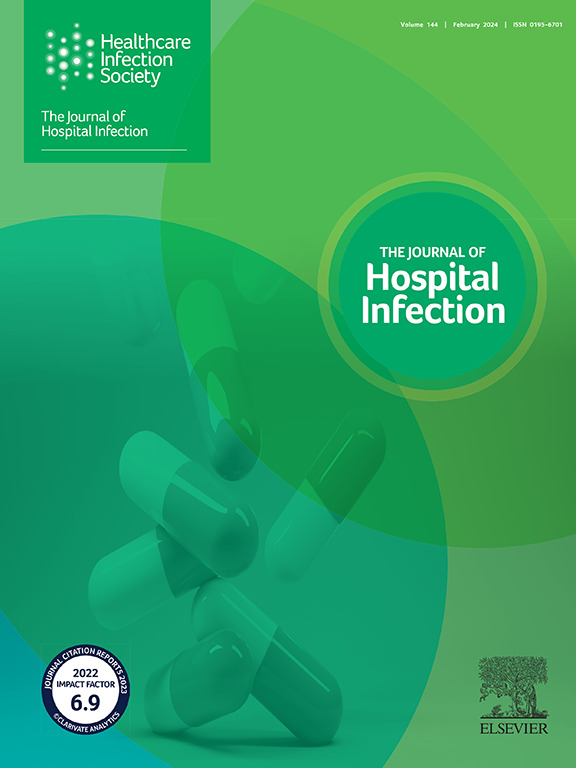Defining water safety in healthcare premises
IF 3.9
3区 医学
Q1 INFECTIOUS DISEASES
引用次数: 0
Abstract
The term ‘water safety’ originated in a time when the risk emanating from the wastewater system was not appreciated.
Water and wastewater systems are uniquely intertwined. Each may impact on the other to have an adverse effect on patient safety.
Risk to patient safety may be introduced at any point from mains water entering a site right through to wastewater exiting the site to join the municipal sewers. These risks begin at inception of a new-build project, through every stage of the life cycle of a building, through to decommissioning.
The term ‘water safety’ is outdated as it does not consider the different structural areas of the water/wastewater system which may give rise to unique risks. This, in turn, hinders the development of expertise, necessary training, guidelines, research, etc. specific to the area.
It is therefore proposed that water/wastewater systems should be divided into three zones: (A) main body of the water system; (B) periphery of the water/wastewater system; and (C) main body of in-premise wastewater system.
It is recommended that the term ‘water safety’ should be used to refer to the main body of the in-premise water system.
It is recommended that the term ‘clinically integrated water/wastewater safety’ should be used to refer to the periphery of the water/wastewater system.
It is recommended that the term ‘wastewater safety’ should be used to refer to the main body of the wastewater system.
It is recommended that both the periphery of the water/wastewater system and the main body of the wastewater system should be recognized in their own right, necessitating development of specific training and expertise in each area.
The water safety group should accordingly change their title to the ‘water/wastewater safety group’.
The range of stakeholders and knowledge base required to ensure water/wastewater safety needs to be expanded, delineated and recognized. Depending on the nature of the stakeholder, this could require improved exchange of information, development of training and expertise, etc.
确定医疗场所的用水安全。
“水安全”一词起源于一个人们不认识废水系统所产生的风险的时代。供水和污水处理系统独特地交织在一起。每一种都可能相互影响,对患者安全产生不利影响。从进入场地的自来水到流出场地加入市政下水道的废水,在任何一点上都可能对患者安全造成风险。这些风险从新建项目开始,贯穿建筑生命周期的每个阶段,直至退役。“水安全”一词已经过时,因为它没有考虑到水/废水系统的不同结构区域,这些区域可能会产生独特的风险。这反过来又阻碍了该领域专门知识、必要培训、指导方针、研究等的发展。因此,建议将水/废水系统划分为三个区域:(A)水系统主体;(B)供水/污水系统的外围;(C)室内污水系统主体。建议使用“水安全”一词来指代内部供水系统的主体。建议使用术语“临床综合水/废水安全”来指代水/废水系统的外围。建议使用“废水安全”一词来指代废水系统的主体。建议应认识到水/废水系统的外围和废水系统的主体各自的权利,需要在每个领域发展具体的培训和专门知识。因此,水安全小组的名称应改为“水/废水安全小组”。确保水/废水安全所需的利益相关者和知识基础的范围需要扩大、界定和确认。根据利益相关者的性质,这可能需要改进信息交流、发展培训和专门知识等。
本文章由计算机程序翻译,如有差异,请以英文原文为准。
求助全文
约1分钟内获得全文
求助全文
来源期刊

Journal of Hospital Infection
医学-传染病学
CiteScore
12.70
自引率
5.80%
发文量
271
审稿时长
19 days
期刊介绍:
The Journal of Hospital Infection is the editorially independent scientific publication of the Healthcare Infection Society. The aim of the Journal is to publish high quality research and information relating to infection prevention and control that is relevant to an international audience.
The Journal welcomes submissions that relate to all aspects of infection prevention and control in healthcare settings. This includes submissions that:
provide new insight into the epidemiology, surveillance, or prevention and control of healthcare-associated infections and antimicrobial resistance in healthcare settings;
provide new insight into cleaning, disinfection and decontamination;
provide new insight into the design of healthcare premises;
describe novel aspects of outbreaks of infection;
throw light on techniques for effective antimicrobial stewardship;
describe novel techniques (laboratory-based or point of care) for the detection of infection or antimicrobial resistance in the healthcare setting, particularly if these can be used to facilitate infection prevention and control;
improve understanding of the motivations of safe healthcare behaviour, or describe techniques for achieving behavioural and cultural change;
improve understanding of the use of IT systems in infection surveillance and prevention and control.
 求助内容:
求助内容: 应助结果提醒方式:
应助结果提醒方式:


